~ Mayen, 19.02.2021 ~
Its gothic St. Clemens church was another victim of the fire, but it was rebuilt after the war.
Its trademark twisted, heavily leaning spire was reconstructed as well.
Segments of the old city wall still stand, including a few towers and gatehouses.
The tower-gate over the river Nette was built in the 14th cenutry, destroyed by a flood, re-built in 1599, and restored in 1979 – or so the plaque in it says.
The inner city was rebuilt on much the same layout as the lost old town, and thus retains some of its mediæval flair despite the sorry postwar buildings.
Before the war, houses hugged the inner side of the city wall, nestled into the arches.
Breakthroughs led outside to gardens as the centuries had rendered the fortifications obsolete.
Over the city towers Genoveva Castle. Its core is mediæval, but over the centuries it received a baroque residential annex facing the inner city, and a barracks to house the prince-bishopric's garrison.
The castle shares the name of Genevieve of Brabant, who is depicted in stone relief at the foot of the hill.
After having been expelled from her husband's estate on false accusations of adultery by his majordomo, faithful Genevieve and her infant son were kept alive by a roe sent by the Holy Mother. After six years in the forest, she was happily reunited with her family.
Appropriately enough, a bunker below the castle sheltered Mayen's residents from the bombing raids during the war.
The meaning of this basalt column was explained to me by a friendly elderly local, an old miner.
He shared with me a lot of information on the city's history and its historical role as a major exporter of basalt and millstones.
The column depicts the different steps of the process: quarrying the stone, carving the millstones, the tools used, and the horse carts which drew them downstream towards the Rhine and Moselle rivers.
Shown also are the weekly 'Blue Mondays' on which all the workers would laze about and get drunk.




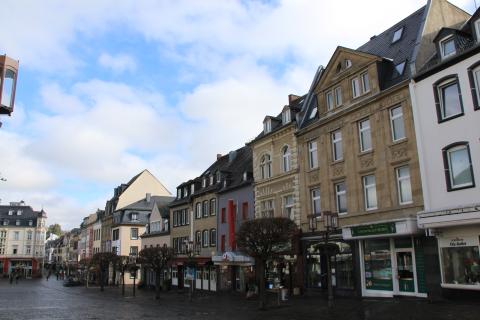

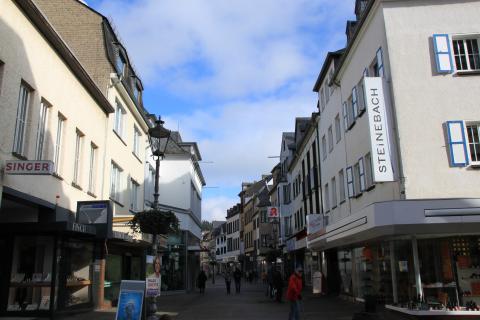












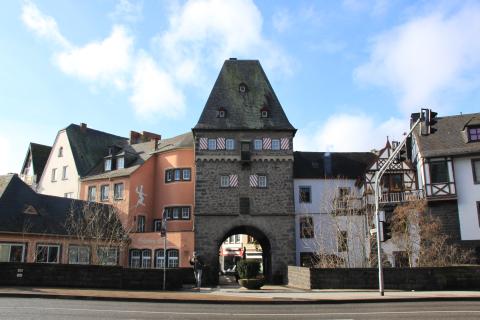

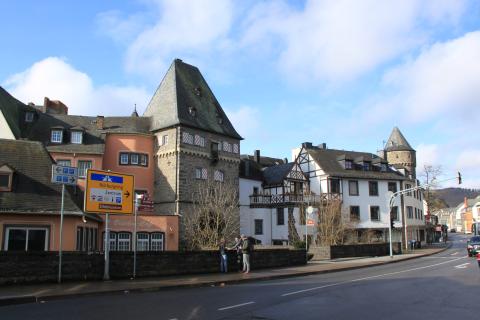


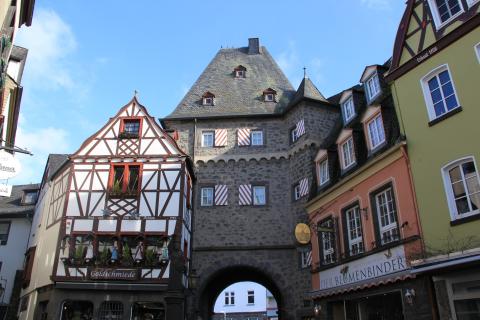




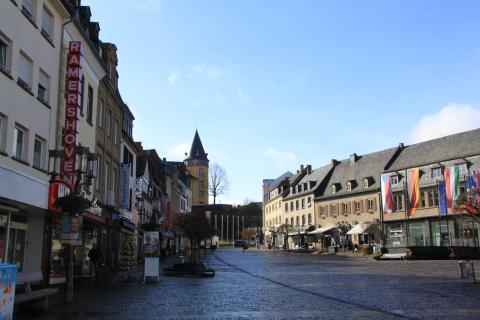


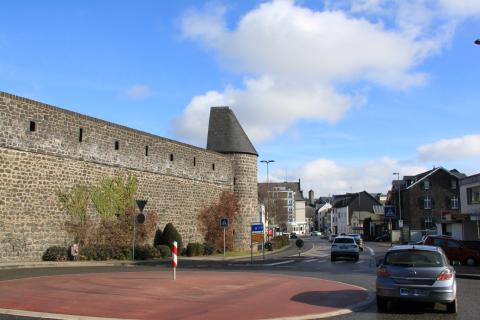









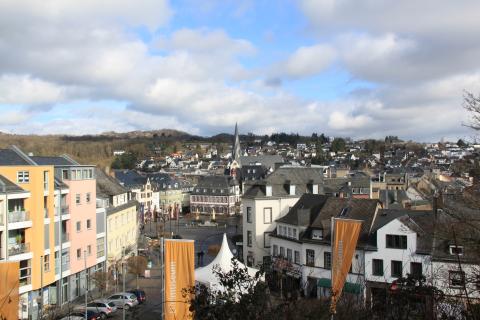






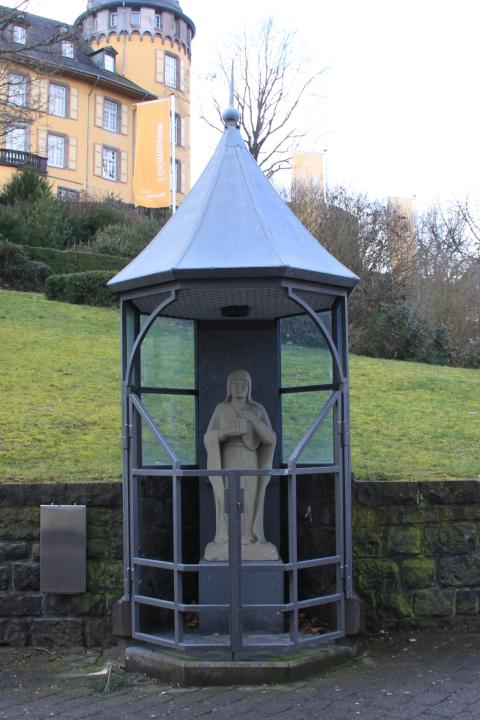



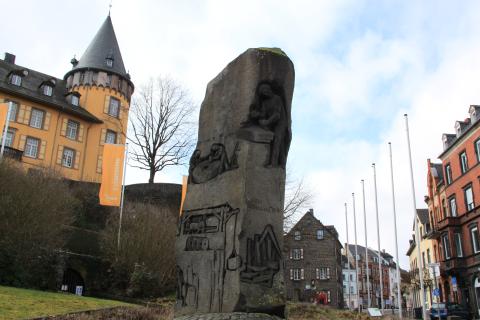


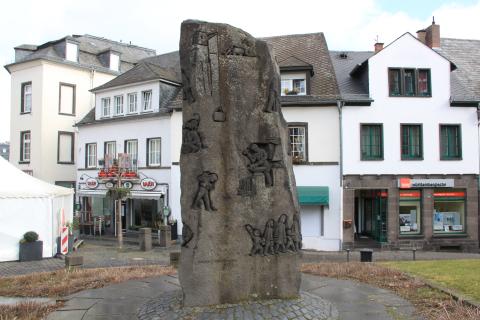





Mayen is a regional centre in the Pellenz region. It suffered greatly during the second World War, with about 80 % of the city was destroyed by Allied bombings or consumed in the ensuing fires.